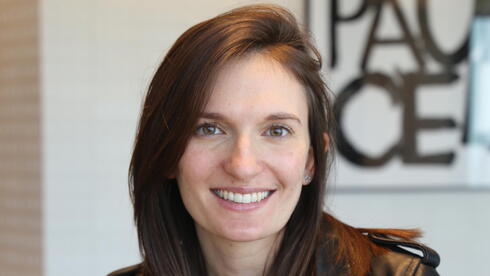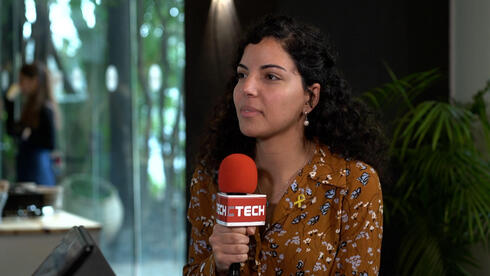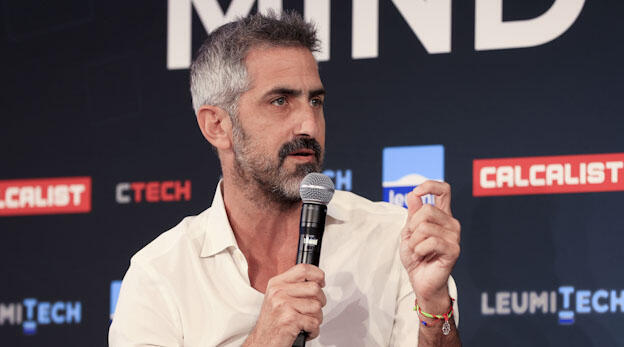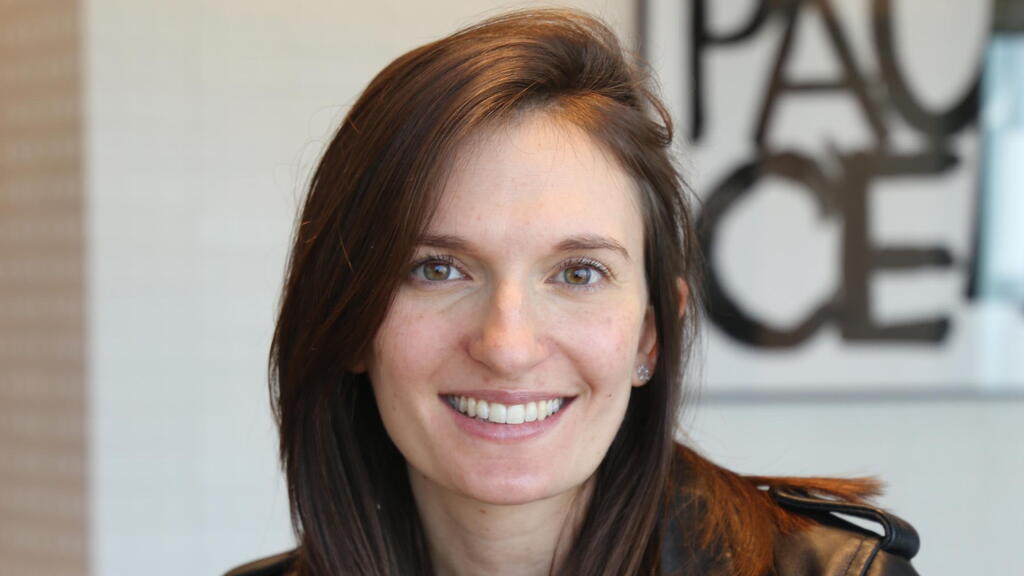
Founders on Sofas
A glimpse into a founder’s session: Returning to a creative mindset
It is normal to have these ‘abnormal’ reactions in the tremendously stressful outward environment we find ourselves in. Don't be hard on yourself about it, rather use these tools to help yourself adapt and retain resilience during this difficult time
It has occurred to me that founders show up at our meetings more anxious, distracted, and less able to accommodate changes and complex situations than usual. The situation in Israel is more challenging than ever, and founders are not expected to show indifference and apathy towards it, quite the opposite. Those reactions are entirely natural and correspond to what we see in the general population. Allowing ourselves to feel difficult emotions, dealing with them, and not ignoring or repressing them will most likely enable us to process them in a positive way and channel them into creative and useful actions.
As our current reality in Israel becomes increasingly overwhelming, I have created the Crisis Resilience Series for founders. In this series we discuss one of the most common issues: regulating our emotions. Our first session introduced a tool from Cognitive Behavioral Therapy (CBT) based on questioning catastrophic thoughts. The second session will introduce an additional CBT tool based on focusing on catastrophic thoughts, called ‘Happy Hour’ (© Dr. Jonahtan Kushnir).
Amy, leading a seed-stage startup with 20 employees, entered our session overwhelmed: “We are nearing the end of our runway, money is running out. Last week, we finally signed a term sheet with a top-tier VC after months of diligent work. Yesterday I got an email from one of our customers saying they are leaving us for the competition, which makes it a 25% churn rate. There is no way the investment will go forward. Investors will want to understand why the customer churned, and that will kill the deal, I know. My focus is shaky. I could not sleep all night. Even though I try not to think about it at certain moments to function and run the business - I can't.”
Amy is overwhelmed by her thoughts. Unsuccessfully, she tries to silence her mind. Amy's downward thoughts reflect our brain's natural negativity bias, triggered by stress or uncertainty as a survival alert. Amy and I practice the 'Happy Hour' technique to learn how to control the stream of catastrophic thoughts and respond adaptively:
First Step: Recognize that you are having catastrophic thoughts that are difficult to control.
As Amy has concluded, the churned customer will KILL the investment and force the VC to pull out the term sheet as a result. This conclusion triggered her spiraling downward thoughts. As a result, Amy invested a lot of mental energy into putting the thoughts to sleep, but they keep resurfacing.
Second step: take 15 to 30 minutes to focus exclusively on the catastrophic thoughts.
Let your mind wander as far as possible, to the worst-case scenario. Imagine and specify how the most devastating possible outcome of this situation would unfold, look and feel.
“Clearly, I will have to inform the investors that the customer had churned, and they will want to speak to them to know exactly what happened. They will discover that the company's situation is somewhat different than what they expected as they delve deeper into the details. We have no chance of raising this round once other VCs in the ecosystem hear that the term sheet was pulled, and 4 months from now I will need to shut down the company. It would be a huge failure and an embarrassment for everyone: employees, investors, and my family. They all believed in me and my vision, and I will let them down. My career is over, and maybe my marriage is too."
It may be difficult to let go of a specific thought when we don't feel we have exhausted it. Limited, intense and focused occupations allow us to give free rein to disturbing thoughts. The very act of repressing intensifies anxiety and consumes a lot of emotional energy. The second benefit of Happy Hour is that it allows us to practice coping, "experience" the worst possible outcome through imagination, and remain resilient. Although very unpleasant, it is not beyond our control.
The third step: take a big breath, enjoy the feeling of relief, and plan your next Happy Hour.
Once the thoughts are freed, we will feel a tremendous sense of relief. We can begin to solve our problems more adaptively once we lower our anxiety about their manifestation.
"I have dealt with worse situations in my time as a founder, but I usually find a way out."
Amy now appears much more calm and composed after coming out of crisis panic. She scheduled her next Happy Hour for the end of the workday.
When you imagine worst-case scenarios and struggling to stop your mind from racing, follow these three steps:
Step 1: Become aware that your thoughts are trapped in a loop.
Step 2: Happy Hour. Take 15 to 30 minutes to focus exclusively on the catastrophic thoughts.
Step 3: Enjoy the feeling of relief, and plan your next Happy Hour.
Practicing Happy Hour allowed Amy to contain her unpleasant emotions and thoughts rather than focusing on the desperate attempt to feel better immediately. Remember, unease is a positive sign of mental challenge and growth, stepping out of our comfort zone. Try not to view it as a threat, but embrace it with curiosity.
The first session will discuss one of the most common problems: regulating our emotions and catching ourselves from over-catastrophizing.
Tom, leading a growth-stage startup with 140 employees, enters our session in a state of crisis—panicking and angry: “Our company is heading to crisis… My VP Product has decided to add a totally new feature at the last minute. He claims our top-tier customers need it NOW, otherwise, they churn. He is changing the entire roadmap for this quarter and taking away energy and resources from a top priority project: strengthening the infrastructure of our platform. This could kill us!”
Tom’s spiraling thoughts are in line with our brains' tendency towards negativity. The brain triggers negative thoughts when we face stress, uncertainty, or any other unpleasant situation, to alert us that something bad is about to happen. It is a survival mechanism, which we must learn to control and respond adaptively.
The following psychological method we use to address this is Cognitive Behavioural Therapy (CBT), an incredibly successful approach to overcoming automatic thoughts and regaining control.
The first step is to stop and recognize the drastic thought that we jumped to in our heads.
The conclusion Tom has reached, that the action of his VP product could KILL his company, is what is triggering his intense emotional response. Instead of letting this thought guide you, take a moment to pause and examine it.
“It could kill the company” - this is the thought we are going to address.
The second step is to put a question mark on our doomsday conclusion.
Stopping to ask himself the question: Could this, the VP Product adding a feature, actually kill my company? Ask it aloud, and answer it aloud.
“Okay it won't kill the company but it will slow us down.”
We don’t stop there, ask yourself follow-up questions: How will this slow you down? What is the goal of your VP Product’s activities? What are other possible outcomes?
You may find that what went from ‘killing the company’ turns to ‘borrowing three developers short-term to add a feature that will stop two main customers from churning but will also slow down our long-term goals.’
The third step is rephrasing.
Simply changing our language from ‘killing the company’ to ‘slowing down our long-term goals’ can impact our mindset, emotions, and ground us. It is also likely that, even after this exercise, Tom still does not agree with his VP Product.
Tom has taken himself out of doomsday panic mode, which would have left him and his VP Product in a worse position, to a much more collected, rational, and controlled mode of being.
This leaves us with step 4: Going back to the problem in a more adaptive, more open way.
After pausing, reflecting, addressing realistic concerns, and navigating away from the doomsday scenario, Tom emerges as a leader who can handle the situation, rather than letting it handle him.
To revisit this tool for moments when you, like Tom, find yourself panicking, envisioning worst-case scenarios, and ready to react impulsively, here are the four steps that could be hugely helpful:
Phase 1: Recognize the thought, stop, and listen to the drastic conclusions your head is jumping to, rather than acting impulsively.
Phase 2: Put a question mark.
Phase 3: Rephrase your wording more accurately to describe your fears, thus bringing down the energy and anxiety.
Phase 4: Returning with a more adaptive mindset where dialog can happen and a constructive conversation can take place.
It is normal to have these ‘abnormal’ reactions in the tremendously stressful outward environment we find ourselves in. Don't be hard on yourself about it, rather use these tools to help yourself adapt and retain resilience during this difficult time.
Noa Matz is an early-stage investor, a certified Psychologist, and a professor at IDC University














